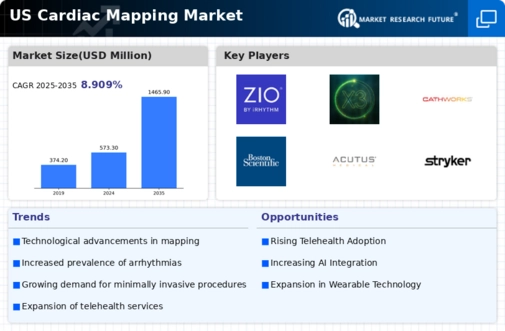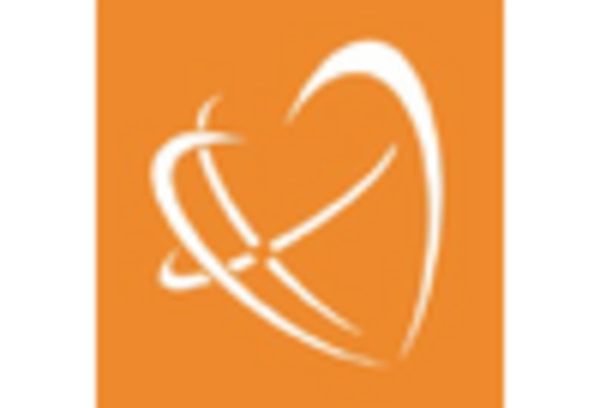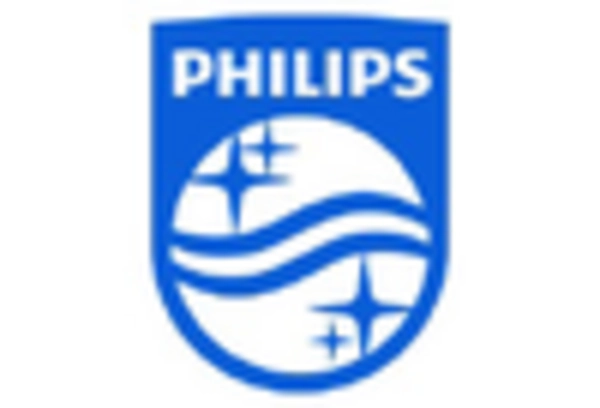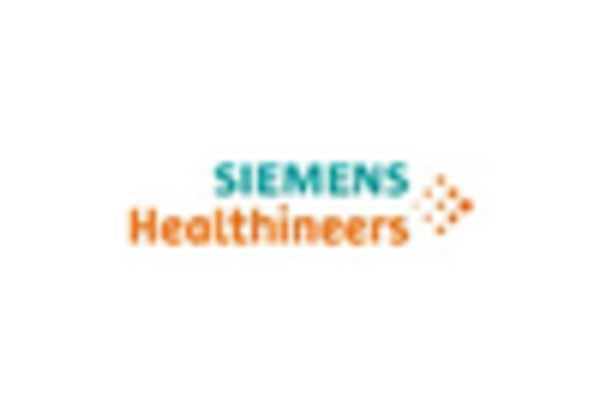Rising Awareness of Cardiac Health
There is a notable increase in public awareness regarding cardiac health, which is positively influencing the cardiac mapping market. Educational campaigns and initiatives aimed at promoting heart health have led to a greater understanding of cardiovascular diseases among the population. This heightened awareness encourages individuals to seek early diagnosis and treatment, thereby increasing the demand for cardiac mapping technologies. As more patients become proactive about their heart health, healthcare providers are compelled to adopt advanced mapping solutions to meet this growing demand. The cardiac mapping market is likely to expand as a result, with an increasing number of patients opting for diagnostic procedures that utilize these technologies. This trend suggests a shift towards preventive care, which could ultimately lead to improved health outcomes for the population.
Technological Integration with Telemedicine
The integration of cardiac mapping technologies with telemedicine is emerging as a significant driver in the cardiac mapping market. As telehealth services gain traction, the ability to remotely monitor and diagnose cardiac conditions becomes increasingly feasible. This integration allows healthcare providers to utilize cardiac mapping tools in conjunction with telemedicine platforms, enhancing patient access to specialized care. The market for telemedicine is projected to grow by 25% annually, indicating a strong potential for the cardiac mapping market to expand in parallel. This synergy not only improves patient engagement but also facilitates timely interventions, which are crucial in managing cardiac health. As telemedicine continues to evolve, the cardiac mapping market is likely to see innovative applications that enhance the overall efficiency and effectiveness of cardiac care.
Regulatory Support for Innovative Technologies
Regulatory bodies in the US are increasingly supportive of innovative technologies within the cardiac mapping market. This support is evident through streamlined approval processes for new devices and technologies, which encourages manufacturers to invest in research and development. The FDA has introduced initiatives aimed at expediting the review of novel cardiac mapping systems, which could potentially reduce time-to-market for new products. As a result, the cardiac mapping market is likely to witness an influx of innovative solutions that enhance diagnostic accuracy and treatment efficacy. This regulatory environment fosters competition among manufacturers, driving advancements in technology and ultimately benefiting healthcare providers and patients alike. The anticipated growth in the market is expected to be bolstered by these favorable regulatory conditions, which may lead to a more diverse range of products available to clinicians.
Growing Investment in Healthcare Infrastructure
Investment in healthcare infrastructure is a critical driver of the cardiac mapping market. As hospitals and clinics upgrade their facilities and technology, there is a corresponding increase in the adoption of advanced cardiac mapping systems. The US government has allocated substantial funding towards improving healthcare infrastructure, which includes the acquisition of state-of-the-art diagnostic equipment. This investment is projected to reach $100 billion by 2027, significantly impacting the cardiac mapping market. Enhanced infrastructure not only facilitates the implementation of advanced technologies but also improves patient access to high-quality cardiac care. Consequently, the cardiac mapping market is likely to benefit from this trend, as healthcare providers seek to enhance their capabilities and offer better services to patients.
Increasing Demand for Advanced Diagnostic Tools
The cardiac mapping market is experiencing a surge in demand for advanced diagnostic tools, driven by the need for precise and efficient cardiac care. As healthcare providers seek to enhance patient outcomes, the integration of sophisticated mapping technologies becomes essential. The market is projected to grow at a CAGR of approximately 10% from 2025 to 2030, reflecting the increasing reliance on these tools. Enhanced diagnostic capabilities allow for better identification of arrhythmias and other cardiac conditions, which is crucial in the management of cardiovascular diseases. Furthermore, the growing emphasis on personalized medicine necessitates the use of advanced mapping solutions, thereby propelling the cardiac mapping market forward. This trend indicates a shift towards more accurate and tailored treatment options, ultimately improving patient care and satisfaction.

















Leave a Comment